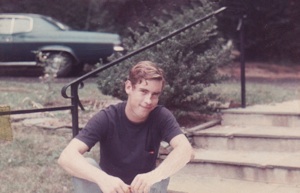Biography


Biography


Peter’s Life--A Short Summary
Peter had a tough time in school. Today, his learning disabilities would have been diagnosed and better treated. In the second grade at The Bluebird School, he was made to sit in the corner with a dunce cap because he could not spell triceratops. He was pulled mid-year and transferred to Friends School, an excellent Baltimore area private school founded and run on Quaker principles. There came a time when it was decided that Friends School could not provide the learning support that Peter needed and that boarding school would be a better choice. So in the seventh grade he was sent to Indian Mountain School in Lakeville, Connecticut. Ninth and tenth grades were at Dublin School in Dublin, New Hampshire. The struggles continued. He came back to Baltimore to attend Boys Latin School. By then he had flunked back two years behind his entering class. Peter was in the eleventh grade at Boys Latin while I, his kid brother, was doing well in the eleventh grade at Gilman School. I remember helping him with his homework. He was miserable.
Boys Latin did not last long. He ended up at Towson High School for a semester, but he never got any traction there either. Finally he gave up on school altogether, but he did pass his high school equivalency test. He had considerable artistic ability and was admitted to The Maryland Institute College of Art. But the freshman year English class threw him back into the same cycle of frustrations that he experienced his entire academic career. He knew that he would never get through.
The Vietnam war was at its peak. By his dropping out of college, a re-classification of his draft status to 1-A was inevitable. So he enlisted in the United States Marine Corps and started basic training at Parris Island, SC on February 5, 1969, his twentieth birthday.
The next time I heard his voice was an excited telephone call he made home near the end of basic training. “I’m not going to Vietnam,” he said. With Peter’s Hollywood good looks and charm, he stood out and was selected for training to be an embassy guard, possibly the White House. We heard from neighbors and friends that they have been contacted by the Secret Service doing a background check on Peter.
But Peter had second thoughts. He had bonded with his platoon and started feeling guilty about not going into combat with them. He was also eager to get home, and the non-combat path would have taken him directly for further training at Sea School in Portsmouth, Virginia. So he declined the softer assignment, and, after a brief visit home, he shipped off to Vietnam in the summer of 1969, just as I was graduating from Gilman School and heading for Princeton.
Peter was shot on June 19, 1970 with just 39 days to go on his tour of duty. We had just gotten a letter from him. He had seen enough of combat and commented, “I am getting too short for this John Wayne gung ho stuff.” He took several rounds in his abdomen and leg. He was med-evaced to the hospital ship Sanctuary and later to Clark Air Force Base in the Philippines. We got periodic reports on his progress, but over the next six weeks, his condition deteriorated. My parents, through the efforts of Congressman Clarence D. Long, made the trip halfway around to world to be at his bedside. Their presence gave him the strength to rally. His condition stabilized sufficiently that he was able to be flown back to Bethesda Naval Hospital in August. There, he had several operations in an attempt to repair his severe abdominal damage, but infections overwhelmed him. He died with my parents by his side on December 1, 1970.

